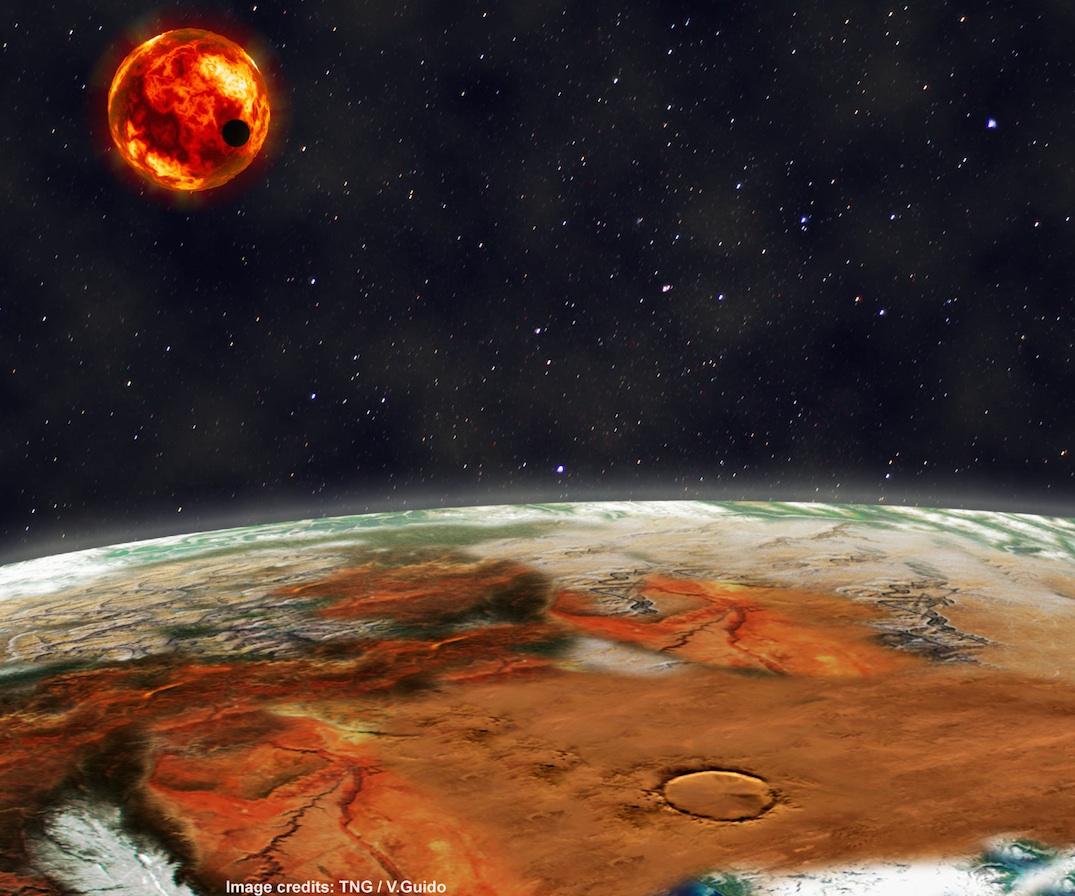Harps-N at TNG finds the first Megaearth
The planet hunter Harps-N, the high precision spectrograph hosted by Telescopio Nazionale Galileo (TNG) since two years, allowed astronomers of the Consortium Italy-USA-UK-Switzerland to find a planet showing a composition similar to our Earth but 17 times heavier.
The Kepler-10c planet was first discovered by NASA Kepler satellite, measuring its dimensions, which are 2.3 times Earth diameters. But only thanks to continuous observation lasting 2 years using Harps-N it was possible to determine its mass, yielding a density of a rocky planet like ours.
Leader of this discovery, Xavier Dumusque from CfA (USA) commented that “We were very surprised when we realized what we had found”. Current theories, in fact, do not foresee the possibility of the formation of such big rocky planets, which in our solar system occurs in the form of iced Neptunes. This fact widens the possibility to find planets in habitable zones.
Every 45 days Kepler-10c orbits its solar type star which is a remarkably old star: 11 billions years compared with our younger system, aged 4.5 billions.
This discovery of a dense planet in such an old system bears consequences on our vision of the primeval universe. If a rocky planet could form when the universe was only 3 billions years old, we know that a non-negligible amount of heavy elements was already created and circulated in the first generation of stars.
This is yet another point that favours the discovery of Earth twins, which were thus also present in early stages of the universe life.
“Here at TNG we are all proud of the performances of this new instrument, which places Italy in the front rank of exoplanet research” adds Emilio Molinari, Director TNG, referring to the spectrograph that is recording over 20,000 raw images every year and has changed the observatory since its installation.
“I wish to add my congratulation to the team which obtained this result that was possible thanks to the effort that INAF made in the field of exoplanet research, in terms of infrastructure and people” declares Paolo Vettolani, INAF Scientific Director.
The solar system Kepler-10 is located 560 light years away from us, in the direction of the Draco constellation. Beside the Megaearth (planet 10c) Kepler also found a lava planet, Kepler-10b with 3 Earth masses and very close to its star, orbiting in just 20 hours.
Alessandro Sozzetti, member of the team which measured the mass of Kepler-10c, stresses that “once again real observations open more scenarios than we were looking for, and even if Kepler spacecraft is now partially inactive, its second survey, named K2, and the forthcoming satellites TESS, Cheops and PLATO (to which INAF and Italy are also contributing), will give job to our planet hunter for a long time”.

artist view of Kepler-10 solar system (V. Guido/FGG)
TNG contact person: Gloria Andreuzzi, tel. (+34) 922433666 (Ext. 3645)

